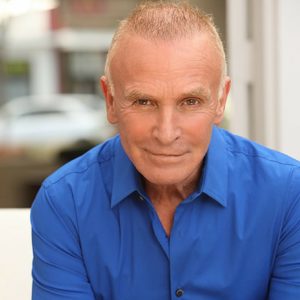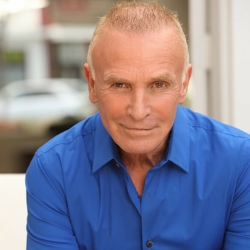The hottest story in anti-aging these days is the story of NAD.
Now let’s be clear — none of us like to use the term anti-aging anymore. It’s passé and silly. We can’t turn back the clock, which is what “anti” aging implies. Most of us who work in this field prefer the term age management medicine, which much more accurately captures the idea of aging smartly, gracefully, and happily. Being older no longer has to look like it did in your dad’s day. Age management is about dying young at an old age. It’s about “squaring the curve” of life so that — rather than experience a slow, painful, decline into senescence starting around age 50 — we live at the top of our game (more or less) till just about the end when we die a quick, peaceful death with minimum disability, preferably sometime after age 90.
OK, now that we’ve got the vocabulary sorted out, let’s talk about what we really care about — extending the “healthspan”— the number of years in which we can perform with vigor, enthusiasm and passion, fully engaged with life, with minimum dysfunction.
Which brings me to the NAD story.
See, the truth is that aging starts way beneath the radar, at the cellular level. We may notice skin wrinkling, lack of energy, low libido, tired eyes, but way before that stuff starts to happen, our poor cells have gotten tired and run down. Cells, after all, have an awful lot of responsibilities. For one thing, they have to produce something called ATP (adenosine triphosphate), which is the molecular unit of energy your body uses to do absolutely everything in life that you do — from blinking your eyes to dancing the Macarena. Growing hair and nails? It requires ATP. Talking? Ditto. Dancing, running a marathon, exercising, thinking, meditating or mamboing — everything runs on ATP, and ATP generation depends on the health of the cell.
Then there’s detoxification. While there are plenty of companies offering expensive and trendy juices for “detoxing,” the truth is that you’re detoxing all of the time, and detoxification starts in the cells. So does fat burning. And the list goes on.
So what does this have to do with this thing called NAD, anyway? What is NAD? Why do we need it, how do we get it, and why does it even matter?
Glad you asked.
NAD — which stands for nicotinamide adenine dinucleotide — is what’s known as a “coenzyme.” (A good example of a well-known coenzyme is CoQ10, a popular supplement for energy whose name is short for coenzyme Q10.) A coenzyme is a compound that is necessary for the functioning of an enzyme. Coenzymes make stuff happen. You can think of them as spark plugs. You could have the most incredible, expensive, custom-made McLaren Mercedes, but guess what? If you don’t have spark plugs, that fabulous expensive transmission won’t turn over. Nothing will work. We’ve all seen the movies — if you want to disable someone’s car, you don’t put it up on blocks and remove the engine, you just pocket the spark plugs.Nobody’s going anywhere without those tiny, inexpensive, but absolutely essential parts.
So NAD is the coenzyme — the spark plug — that’s needed for absolutely every one of the cellular operations I just mentioned, the ones that — when they slow down or go offline —make you feel and look old and tired.
And guess what happens as we grow older?
NAD stores plummet.
When the supply of NAD in the cell is low, the cell goes on a “budget,” much like a company that’s had its cash flow cut in half. Non-essential operations slow to a halt. The company — or in this case, the cell — tightens its metaphorical belt. Important functions get sidelined. The cell begins its inevitable decline. And the visible signs of that are the ones we all know too well, the ones that send half the population of Beverly Hills to the plastic surgeon’s office.
Scientists have pondered the problem of disappearing NAD stores for a long time. Figuring out how to replace or increase our NAD stores has been one of the most vexing problems in the field of age management.The obvious answer, NAD supplements, don’t work.Instead, we need a biohack to trick our cells into making more of the stuff.
And that biohack is finally here. It’s a special form of vitamin B3, discovered by biochemist Charles Brenner, with the unwieldy name of nicotinamide riboside, and sold under the proprietary nameTruNiagen. TruNiagen is creating a storm in the age management world because it has been demonstrated to significantly increase our NAD stores. And if you think that isn’t a really big deal, read on.
Remember resveratrol? Terrific supplement. Resveratrol comes from the skins of dark grapes and has long been known as an “anti-aging” supplement precisely because it “turns on” longevity genes known as the SIRT (Sirtuin) genes. And that’s great. But you know what? Resveratrol can’t actually make contact with those genes and turn them on unless there’s NAD. Even the bestresveratrol needs the NAD spark plug — without that spark plug, resveratrol can’t make its magic.
That’s why I’m personally doing everything I can to keep my NAD levels as high as they can be for as long as possible, and that means a daily dose ofTruNiagen together with nutrients likeresveratrol, curcumin, vitamin D, omega-3s andmagnesium. It forms a “stack” that goes a long way towards keeping your cells happy and functioning, reducing inflammation, and “squaring the curve” of aging.
Jonny Bowden, “the Nutrition Myth Buster,” is a board-certified nutritionist and the
 best-selling author of 15 books including The Great Cholesterol Myth, Living Low Carb, the 150 Healthiest Foods On Earth and Smart Fat. To learn more about healthy living, motivation and nutrition, visit jonnybowden.com.
best-selling author of 15 books including The Great Cholesterol Myth, Living Low Carb, the 150 Healthiest Foods On Earth and Smart Fat. To learn more about healthy living, motivation and nutrition, visit jonnybowden.com. Note: The statements presented in this column should not be considered medical advice or a way to diagnose or treat any disease or illness. Dietary supplements do not treat, cure or prevent any disease. Always seek the advice of a medical professional before altering your daily dietary regimen. The opinions presented here are those of the writer.
Posted on WholeFoods Magazine Online, 11/3/17










